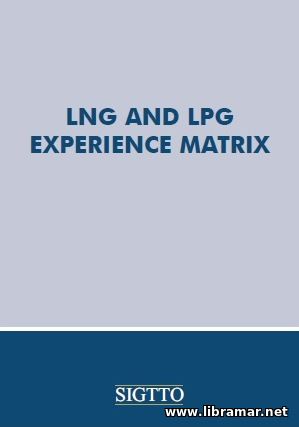 This LNG/LPG Officer Experience Matrix is aimed to offer the transparent guidance for proper assessment of the risks relating to the officer complement. It considers a number of elements, including experience in rank, length of sea service, training assessment and experience in LNG/PLG operations.
When evaluating risk in the event of non-compliance with a particular element of the experience matrix, consideration should be given to other mitigating factors, including bespoke training, the manning scale in place, time with the LNG/LPG ship owner/operator the wider competence management systems employed by the ship operator in officer recruitment and development. In the meantime, it is very important to appreciate that subject matrix has been supplied to serve as a tool for the risk evaluation and management.
When dealing with the risk evaluation in case of non-compliance with the specific element of this matrix, due consideration is to be given to other mitigating factors involved, such as the manning scale, bespoke training and others. Careful attention to management of the risks has been widely recognized of the maintenance of the safety record of the ship and environment protection.
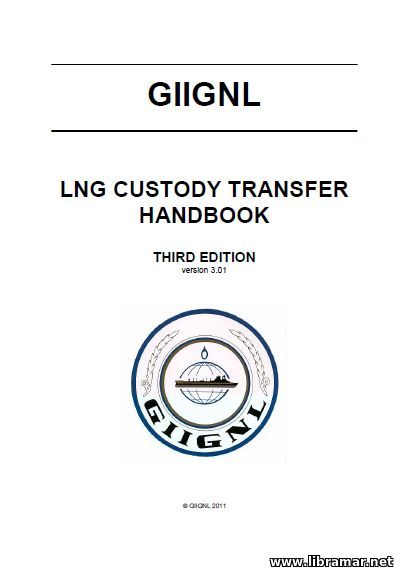 Here is a new edition of the LNG Custody Transfer Handbook reflecting the GIIGNL's technical understanding of the best practices. This handbook was prepared and released with the intention to serve as a reference manual assisting readers who want to better understand all equipment used by and procedures available to the GIIGNL members when determining the quantity of the energy of the gas which is being transferred between terminals and gas carrying ships; note that the present publication should not be treated as a technical specification/recognized standard.
At the same time, it shall be underlines that it was not the original intention of the authors of this handbook to provide detailed technical procedures of the ship-shore custody transfer of LNG; they rather tried to set out the practical requirements and issues to facilitate skilled operators to prepare suitable procedures for specific transfer operations.
The book starts with some introduction followed by general formulae and schemes of transfer as well as the instruments used, then there come parts that deal with the volume, temperature and vapor pressure measurement, sampling of gasified LNG, control devices and vaporizers, sampling procedures, gas analysis, calibration methods, density calculation and many other relevant technical info.
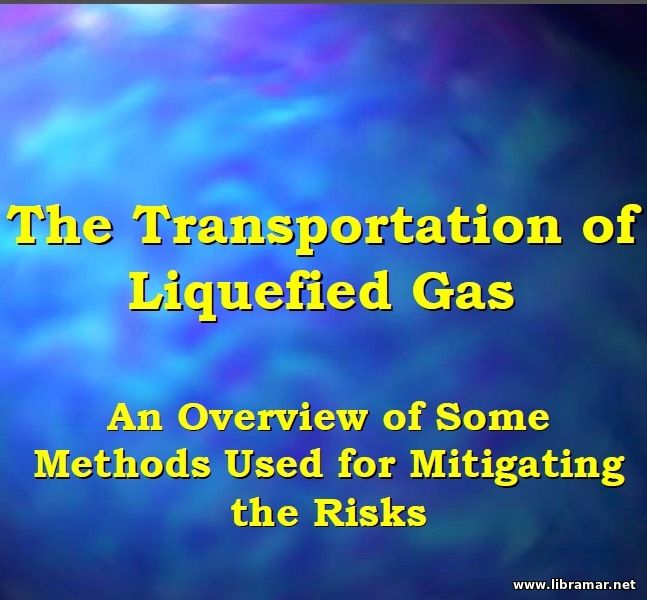 This presentation is dedicated to the transportation of liquefied gas. It contains an overview of some methods used for mitigating the risks and describes potential hazards of LNG and LPG, and summarizes various techniques to minimize their risks on the vessels, at terminals and jetties, combined operating practices and procedures, contingency planning. The presentation starts with some historical background.
The marine transportation of LPG started before the World War Two and was conducted in the pressurized containment and in relatively small quantities. Transportation of LNG started several years after that, in 1959. Today, there are more than thousand of gas carriers. The major hazard associated with the marine transportation of all liquefied gases is not their liquefied form but rather the vapor released. The heat is released, subsequently, that may ignite and cause fire.
With regard to the possible pollution of the marine environment, liquefied gases are neither toxic nor persistent so shall not be considered water pollutants; however, possible explosions was obviously cause lethal effects to various marine organisms - but in general the environmental hazard is less than the one of the crude oil spills...
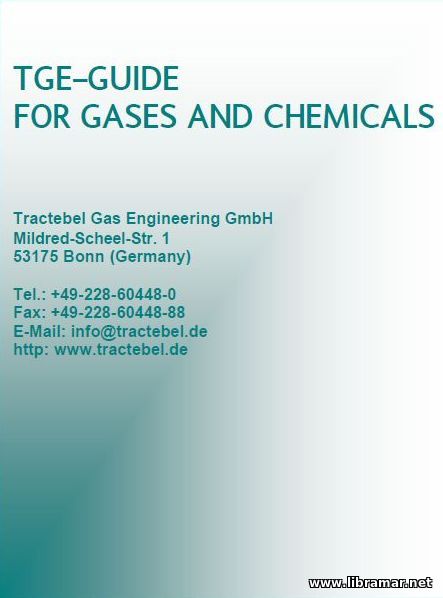 The present publication was written and released by the TGE(standing for Tractebel Gas Engineering) professionals with the declared intention to provide all people who are concerned with transportation, handling and further storage of liquefied gases as well as some chemicals with all technical info that they might require in order to perform their professional duties in a safe and effective manner.
It contains all main physical and thermo-dynamic properties of the above mentioned liquefied gases and chemicals presented in the diagrams and data tables. The team of authors of the handbook hopes that it will serve as a useful guidebook for those who require the basic technical information.
There are thermo-dynamic properties of various liquids/gases, safety properties of these substances, diagrams presented in a half-logarithmic scale and provided with explanations and descriptions, diagrams summary and diagrams of pure substances for LNG and chemicals are also there together with the conversion factor tables. In short, this publication is recommended to any people who are directly or indirectly involved in any activities relating to the safe transporting and handling of all those substances.
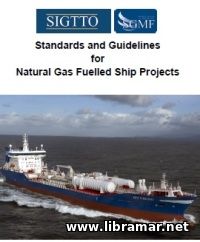 The present booklet was prepared by the specialists of the Liquid Natural Gas Ship Fuel Safety Advisory Group and then published by SIGTTO together with SGMF on behalf of the Group. The twenty-two members of the Group possess huge professional experience in the LNG industry and include shipbuilders, marine class societies, vessel and terminal operators, makers, regulators and other parties.
The primary objectives of the above stated Group is the promotion of the use of LNG as a safe marine fuel friendly to the environment, retaining meanwhile a level of safety that would be considered equivalent to the safety level of the large scale liquid natural gas transport industry as well as the identification of the key issues and providing necessary technical guidance and valuable relevant information basing on the professional experience of the members.
They also try to provide required assistance to SIGTTO in developing of practical policies concerning the implementation of the natural gas as a fuel. This booklet does not have the standards themselves; it has been rather developed to provide the users with the list of the industry guides and recognized standards to be references so it will still be useful to the people in the shipping industry.
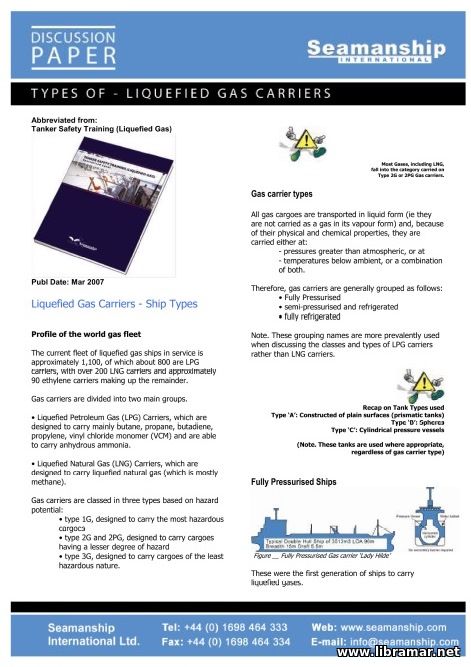 This is the Discussion Paper dedicated to the Types of LNG (Liquefied Natural Gas) Carriers, prepared by the Shipping International Ltd. It was abbreviated from the Tanker Safety Training (LNG) publication. All gas cargoes can be transported only in a form of a liquid (i.e. neither gas nor even vapor) and, taking into account their physical/chemical properties, they have to be either at pressure greater than atmospheric pressure, or at temperatures below ambient temperature; the third option is in fact a combination of first two.
That is why all gas carriers are usually divided in three groups - fully-pressurized, semi-pressurized and refrigerated, and fully refrigerated. However, it shall be noted that the grouping names stated above are mostly used when discussing the types and classes of LPG rather than carriers of natural gas.
Take your time and just go through this short but very informative booklet and you will get a good knowledge of the nomenclature of the gas carriers and will be much more familiar with their types, general technical characteristics, descriptions of the construction and equipment, main advantages and disadvantages of the particular type etc. - excellent for training purposes.
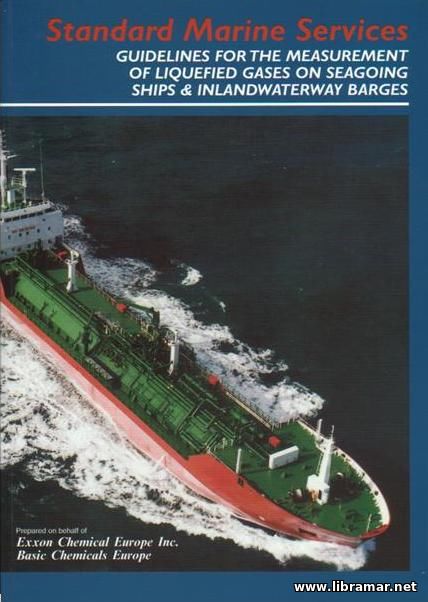 These guidelines were developed in 1998/99 for Exxon Chemical Europe Inc., Basic Chemicals Europe by Captain C. Allport of Standard Marine Services Limited and replace earlier guidance. They are based upon the report and advice from an LPG Measurement Survey conducted by Srini Sivaraman of ER&E in May/June 1997 and incorporate the earlier guidelines for Liquefied Gas Cargo Measurement and Calculation, produced in 1987 for Exxon Chemicals International by the Centre for Advanced Maritime Studies, Edinburgh.
The earlier guidelines were adopted by Exxon Chemical International Inc. and approved by Regional Audit in 1988. The key to accurate cargo measurement based upon ship's figures depends on the precision of the tank calibration and calibration of associated level, temperature and pressure measuring devices in addition to the use of consistent methodology. Conformance to the recommendations made in these guidelines will result in transfer custody quality that is within the expectation of Exxon Corporation controls. The practices and procedures described in this document provide guidance for improving or maintaining liquefied gas measurement level of uncertainty within the accuracy requirements of Exxon's Hydrocarbon Measurement Practices (HMP) .
Contrary to the general recommendations contained in the HMP, these practices and procedures will demonstrate that quantity determination can be based upon ship or barge measurement. Custody transfer integrity is comparable to and in some cases can be better than shore systems and match HMP requirements.
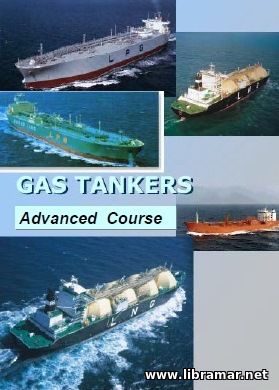 This training course has been intended to help people get better understanding on liquefied gases handling. It is actually the continuation of the training commencing with the Gas Tankers - Familiarization Course. It consists of fourteen chapters - Introduction; Actual Gas Cargoes; Compartment Systems; Freighting; Chemistry and Physics; Cargo Handling Equipment; Monitoring and Control; Safety and Environment; Gas Measurement; Cargo Pumps; Cargo Handling Routines; Cargo Calculation; Cooling Processes and associated calculations; Insulation; Heat Transfer.
It is critically important training for everyone involved in any way in marine transportation of various liquefied gases, and also in operation/maintenance of related machinery, and calculations. During the period 1984-1992 some serious limitations to the STCW became apparent. People did feel that some of its requirements were vague and left to the sole discretion of the Parties, while others declared the problems with no any IMO oversight of compliance with the requirements, limited PSC, lack of clear competence standards, etc. It does make sense for personnel dealing with running the gas tankers to go through the materials of this course.
|







